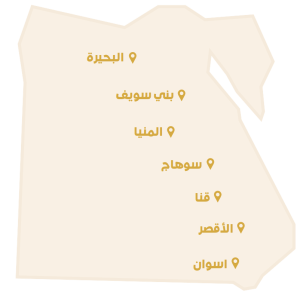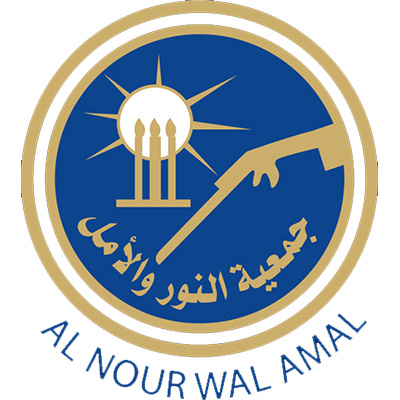Project to establish tender units to serve children and persons with disabilities in villages deprived of services
Establishing community-based rehabilitation units in underserved areas by 76 units in 10 governorates to serve more than 10,600 children with disabilities and 10,460 families of persons with disabilities, and building the capacity of more than 100 persons with disabilities to entrepreneurship in Upper Egypt, as these units work to improve the living conditions of children with disabilities in underserved areas through a rights-based approach based on empowering the family and society and also aims to provide rehabilitation basic services for all types of disabilities from the age of one day to 18 years, in underserved villages.
These projects are based on a community-based rehabilitation/inclusive development methodology based on WHO policy.
(WHO methodology)
It includes the following services:
- To conduct assessments for children and people with disabilities.
- To develop early intervention plans and specialized rehabilitation programs for children with disabilities to develop their language, motor, academic and pre-academic skills, self-care and other abilities by providing tailored sessions for each child that provide children’s needs for basic rehabilitation services at the local level, while building referral systems and partnerships from outside the community to provide any services that are not available within the unit.
- To make home visits to identify and monitor needs realistically and work with each case according to its own needs through needs assessment tools and identify means of meeting these needs through the services provided in the project (family training, cognitive capacity development, sensory capacity development, and family counselling).
- To collaborate with nurseries and schools on educational and community integration through several interventions and activities.
- To raise the awareness of families of persons with disabilities and the local community of the needs and rights of children with disabilities through the implementation of educational seminars, and the application of referral services through networking with various community institutions to join the community to work on it or various partnerships.
- To enable families to train their children at home effectively, support the brothers of people with disabilities to accept individual differences and support them with different ideas to support their parents.
- To train families on manufacturing low-cost tools so that they can help a person with disabilities in case of need.
- To provide some of the assistive devices such as: Wheelchairs, hearing aids, certain means, etc….
- To possibly establish and implement some small projects for persons with disabilities who generate income.
- To qualify and raise the awareness of nurses working in each health unit in the targeted villages on early detection and intervention.
- To implement a touring reception in the surrounding villages where mobile reception services are provided in a number of villages adjacent to the villages in which the units are located to provide diagnostic and awareness services to the families of persons with disabilities and then refer them to the units where the project works to receive continuous rehabilitation services.
“Karas is an 8 years old, as in the picture, he appears to be energetic and social; he loves to dance, he doesn’t like it to stay still and hovers around all day. It is always the reason for the laughter of anyone who meets him on his way, but what he and his family were going through was not joyful at all. Karas didn’t know how to speak, that is why his mother thought that this was because he had Down syndrome, even though she saw many people and they spoke normally. In the rehabilitation unit, Karas started taking training sessions between speech and skills development and after one year of training, Karas was gladly granted admission to an integration school. He didn’t have Down syndrome. He just needed rehabilitation, training and awareness, which became available for him and his family.”
His mother from the Community Based Rehabilitation Units Project in collaboration with City Center, Caritas



